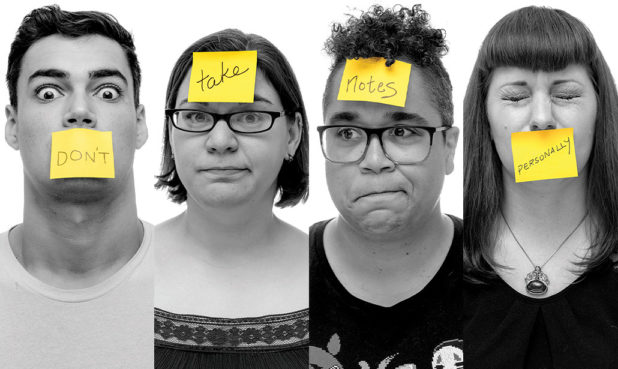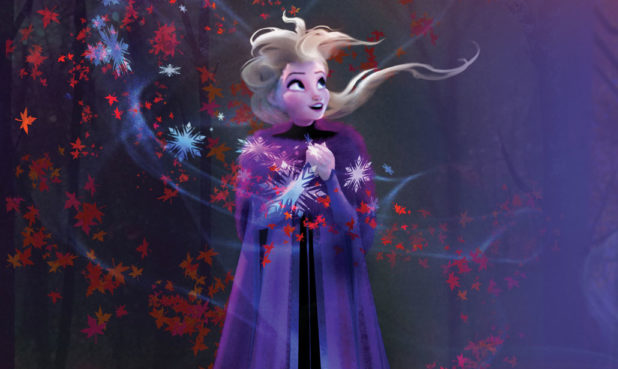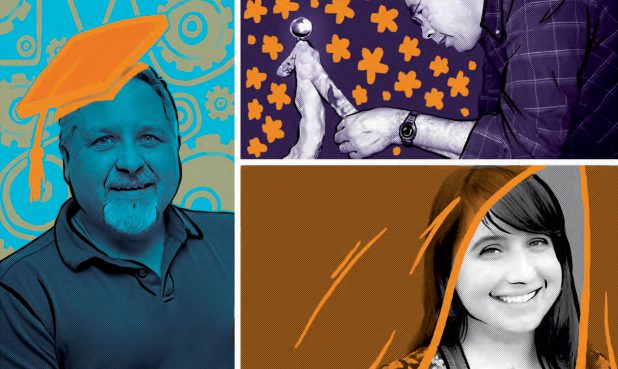Abominable started out as a blank slate—DreamWorks wanted a film about a yeti. The idea intrigued Jill Culton, the writer and director, because she was interested in exploring a nonverbal relationship between two characters.
“I’ve owned giant dogs my whole life and the relationship between a girl and yeti, this non-speaking character, really appealed to me,” she says.
She started to pull influences from her own life as she began crafting the story about a 16-year-old girl named Yi who finds a yeti in the center of a bustling Chinese metropolis. Culton also wanted Yi to be independent and not afraid to get dirty, showcase a vast journey in the narrative and take the story to a whimsical place that involved magic. It challenged her imagination and she found inspiration while hiking in the woods.
“It’s been a powerful journey because when you pull stories from stuff that is grounded and based on truth, I think it comes from a very sincere place,” she adds.
Set in China and showcasing Chinese characters, the production had a valuable partner—Pearl Studios (formerly known as Oriental DreamWorks)—to ensure the story was both authentic and honored the culture.
“It was really back and forth,” says Production Designer Maxwell Boas, who was enlisted to foster and execute the look of the film. “Does this exist in China? Is this accurate? Or even some of the postures the character might stand in, graphics on a t-shirt, building signs, and things like that.”
They dove into details: How do you pour a tea kettle? Can someone hold a pork bun in one hand and then use chopsticks in the other? Or simply noting the fact that certain signs on doors and windows are often hung upside down?
The teams in both Shanghai and Glendale held bootcamp conference sessions on BlueJeans, a Skype-like software, every other day, and when the staff at DreamWorks headed home the Shanghai team was beginning their day. “We kind of did a handoff [and when] we would come in the next morning, we’d have artwork to look at from their full day,” says Boas.
Abominable started out as a blank slate—DreamWorks wanted a film about a yeti. The idea intrigued Jill Culton, the writer and director, because she was interested in exploring a nonverbal relationship between two characters.
“If you don’t switch up your color palette through every sequence and be really specific, it doesn’t feel like you’re actually traveling”
The Journey Begins
The story kicks off in a futuristic Chinese city—glass filled, vertical with neon lights and crowds.
“A lot of color and shapes seem very rectilinear and hard-edged, a lot of reflections and neon signs and graphics, and kind of intentionally hiding the sky and not showing stars or clouds until we leave the city, and then we get that contrast to start the adventure,” says Boas.
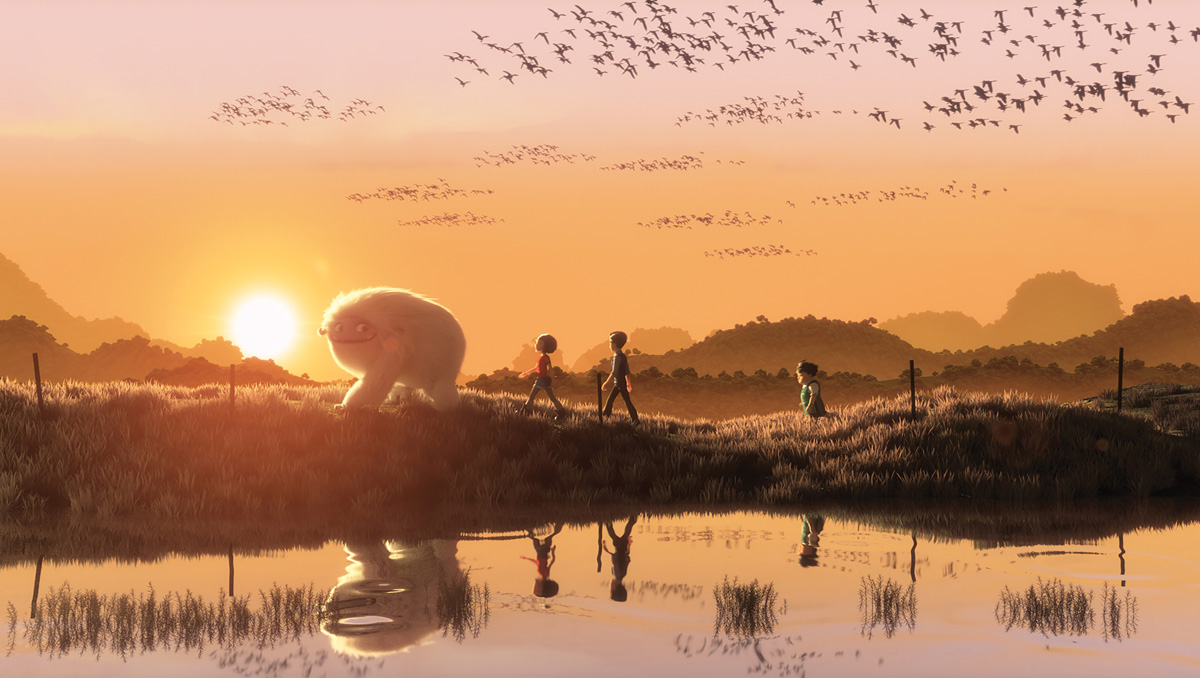
The adventure is a journey across 2,000 miles of majestic landscape that eschewed iconic landmarks familiar to Westerners (like the Great Wall) for the beauty of Quindao Lake, the vibrant Luoping canola fields, the massive Leshan Giant Buddha or the vast Gobi Desert.
“I put a giant map of China on my wall when I started plotting the journey,” says Culton. Though the characters travel logically from East to West, Boas says, there was “definitely some movie magic and liberties as far as how much ground they’re covering.”
“If you don’t switch up your color palette through every sequence and be really specific, it doesn’t feel like you’re actually traveling”
But the real challenge was conveying a sense of the evolution of the journey. “If you don’t switch up your color palette through every sequence and be really specific, it doesn’t feel like you’re actually traveling,” notes Culton.
Each location had to have a signature look to underscore progress without repetition. “We researched a lot of the real locations—distinct palettes,” says VFX Supervisor Mark Edwards. “The Buddha [has] this rich green foliage around this reddish sandstone. It’s fairly distinctive. The canola fields are this ridiculously vibrant yellow, so that influenced where we would take that scene. But it was always thinking about time of day, lighting, construction, and how we could make it feel like a unique set at every placement.”
Boas, a painter, started developing a color script early on, mapping out the whole movie and creating a linear timeline of mood and color. The iconic blue of Mt. Everest represented home for the yeti and was used sparingly until they reach their destination. The color script’s emotional arc also centered on Yi, who begins as a rebellious teen unwilling to accept the warmth of her family. Boas associated warm shades with Yi’s mother and grandmother so at the end of the film it’s a tool that conveys acceptance and resolution.
A blueberry grove that exists by the Yellow Mountain inspired another sequence and setting. “The Yellow Mountain really showcases the scale and scope of that location,” says Boas of the carved staircases that traverse the cliff face. “They fly off with a magic giant dandelion.”
Koi Clouds & Volumetrics
The magic was a key element in the movie that required thoughtful planning, ingenious technological solutions and effects while maintaining a sense of jeopardy in the story.
“Magic is always tricky because it’s so subjective. In general, there are very typical magic tropes with different visual cues that folks know and use, and we wanted to try and stay away from some of the fairy dust,” says Edwards.
They needed to create a logical foundation for the magic. Culton’s solution: The yeti’s magic is based in nature. “He can’t influence animals, he can only influence flora, fauna, clouds, water, wind… it gives you a foundation to start with that feels like it’s real.”

The team of artists and technicians came together to brainstorm new technology and new looks to create something that was beautiful, artistic and impressionistic. They didn’t want a superhero effect with magical strands shooting out from the character’s wrists. Instead, they looked to the aurora borealis for inspiration and began to determine how the magic travelled.
Head of Effects, Jeff Budsberg, started testing out different solutions so the team could react to what was and wasn’t working. “We were really fortunate to be invited to a lot of the early meetings with story [to discuss] how we could interlace the magic to hit these key moments and what those might look like,” says Edwards.
Rather than having mystical threads of magic that travelled from the yeti, they settled on an internal glow—almost like fiber optic light emanating from the fur—to imitate aurora borealis elements that triggers the environment to react around him. For example, blueberries that grow bigger and bigger until they explode.
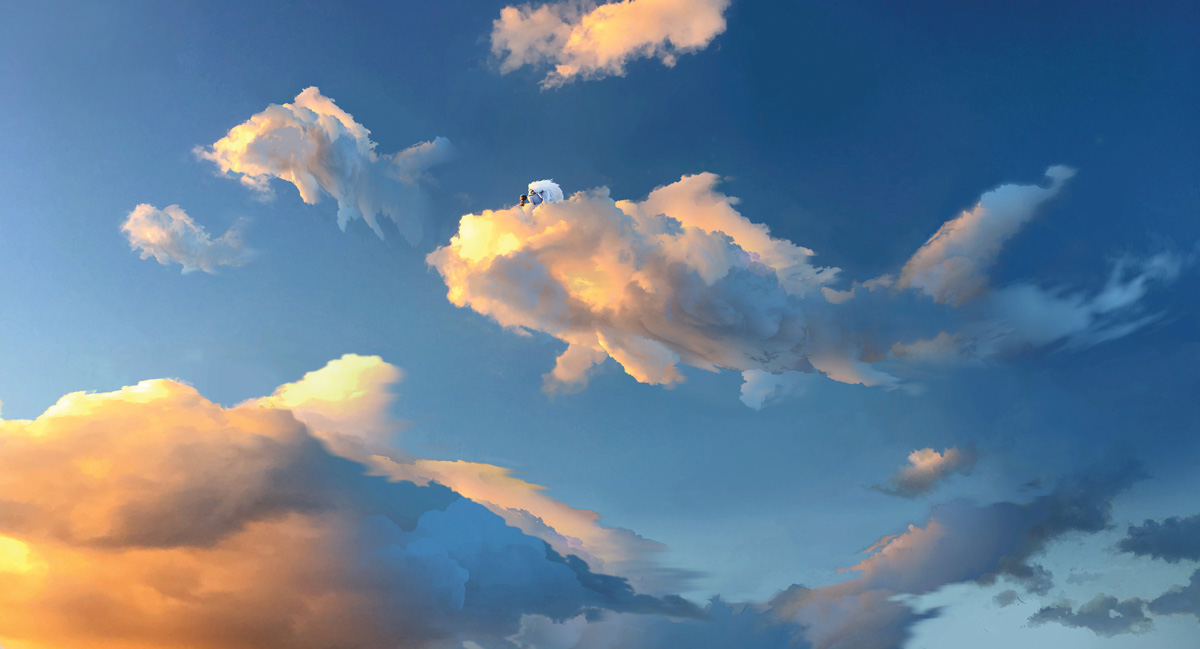
Another challenging sequence involved the characters travelling across the sky on koi-shaped clouds. “That was a really tricky visual problem from a lot of different angles,” notes Edwards. The team worked with a mostly white palette—white clouds, white yeti, white mountain landscape—to model koi out of clouds, which have this distinct orange pattern, and creating a fluid movement so that it didn’t look like the characters were riding a carousel fish in the sky.
Solutions included using light from the sunset to pierce through the volumetrics of the clouds to mimic the patterning of koi fish. “We looked at a lot of time lapse footage of clouds filling into valleys and mountain spaces, which really feels like water,” says Edwards. “Domin Lee was the [effects] lead on that and he did a great job in terms of developing a ‘river’ for them to go through so that they weren’t all just flying in empty space. You want it to be tangible enough that they could ride it but [also] feel like a cloud.”
The team conducted a lot of early prototyping to determine how ephemeral they could make the clouds, how much motion would work before it got distracting, how many wisps they could have, what those shapes would look like, and how they would trail off –“it’s easy for it to look smoky,” says Edwards.
The collaboration of all the different departments heightened the natural settings, capturing the enchantment of the Chinese landscape and pulling off this magical journey. “I feel like film is such a powerful medium, and in animation…we get to create characters that don’t exist and make them believable,” says Culton. “That is a huge challenge but a privilege as an artist to be able to have all of that [talent] at our fingertips to use.”

